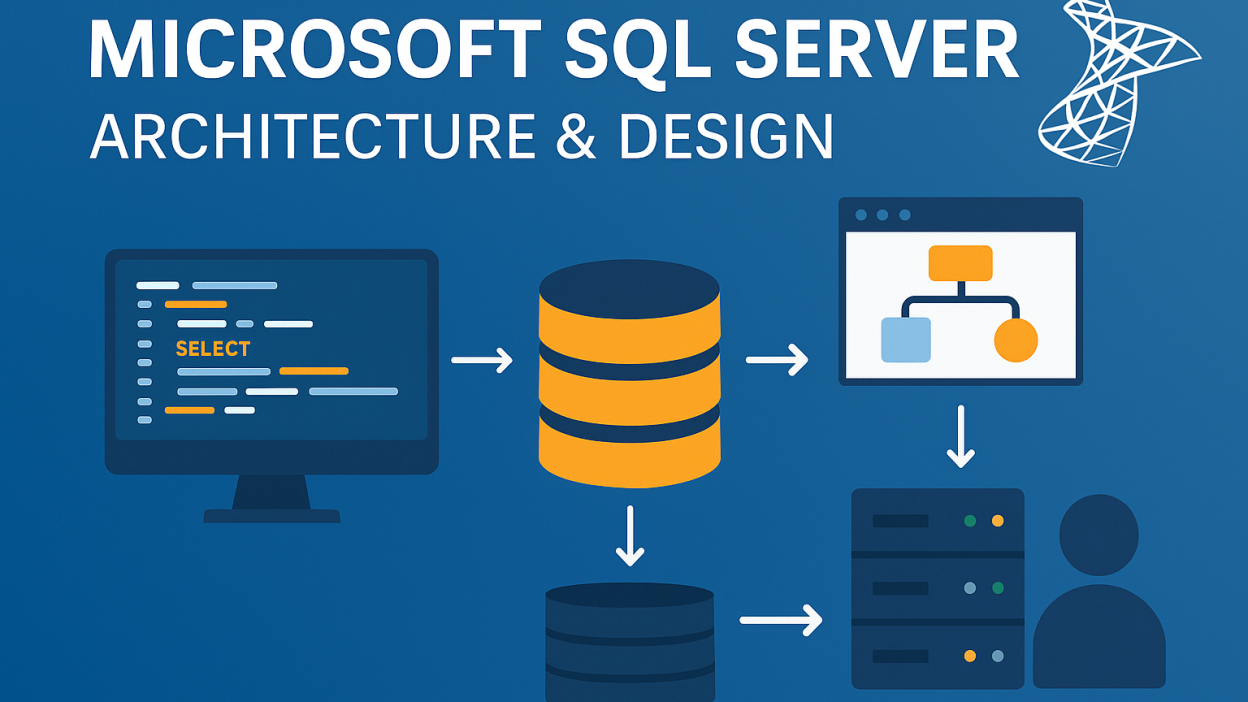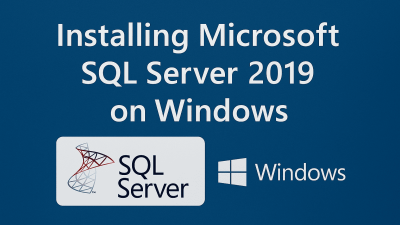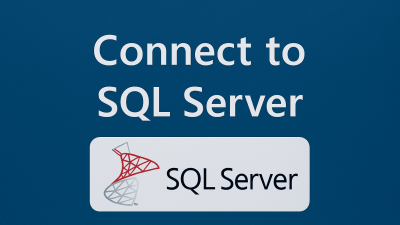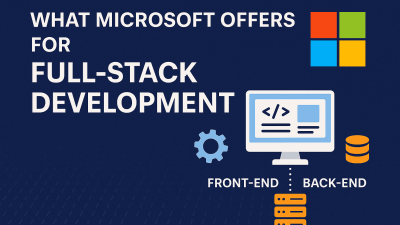Introduction to SQL Server Architecture
Microsoft SQL Server follows a client-server architecture, where client applications send requests to the SQL Server, which processes the data and returns the results. This architecture ensures efficient data management, security, and high performance.
Below, we break down SQL Server’s architecture into its core components, explaining their roles and interactions.
Key Components of SQL Server Architecture
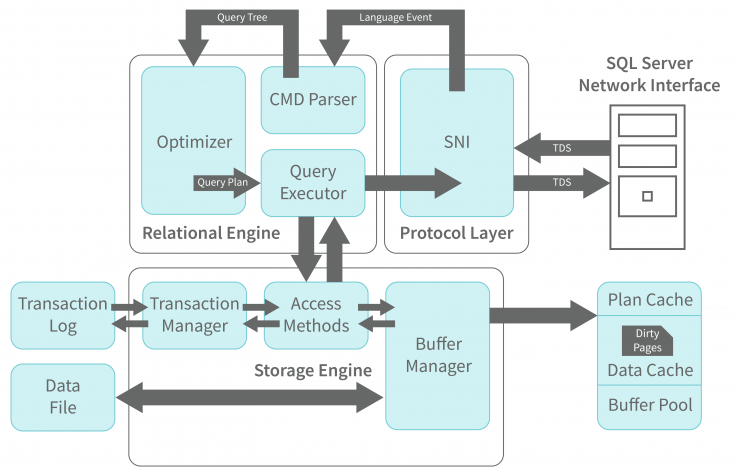
SQL Server’s architecture consists of three primary layers:
- Protocol Layer
- Relational Engine (Query Processor)
- Storage Engine
Let’s explore each in detail.
1. Protocol Layer
The Protocol Layer facilitates communication between the client and SQL Server using different network protocols. It ensures seamless data transmission via Tabular Data Stream (TDS), a protocol optimized for SQL Server interactions.
Supported Protocols:
- Shared Memory – Used when the client and SQL Server run on the same machine, enabling fast communication via memory.
- TCP/IP – The most common protocol for remote connections over the internet or intranet.
- Named Pipes – Used for LAN-based communication, allowing SQL Server to interact with clients over a network.
The Protocol Layer ensures that client requests are correctly formatted (using TDS) before passing them to the Relational Engine.
2. Relational Engine (Query Processor)
The Relational Engine is responsible for query optimization, parsing, and execution. It determines the most efficient way to process a query and interacts with the Storage Engine to retrieve data.
Key Sub-Components:
- Command Parser
- Checks the query for syntax and semantic errors.
- Converts the query into a logical query tree for further processing.
- Query Optimizer
- Generates multiple execution plans and selects the most efficient one.
- Uses cost-based optimization to minimize resource usage.
- Query Executor
- Executes the optimized query plan.
- Retrieves data from the Storage Engine and sends results back to the client.
3. Storage Engine
The Storage Engine handles data storage, retrieval, and transaction management. It interacts with physical storage (disks, SAN) and ensures data integrity.
Key Sub-Components:
- Access Method
- Determines how data is accessed (e.g., table scans, index seeks).
- Works with the Buffer Manager to fetch data efficiently.
- Buffer Manager
- Manages data caching in memory (RAM) for faster access.
- Uses plan cache to store execution plans for reuse.
- Transaction Manager
- Ensures ACID (Atomicity, Consistency, Isolation, Durability) compliance.
- Uses Log Manager (for transaction logging) and Lock Manager (for concurrency control).
Storage Files:
- Primary Data File (.mdf) – Contains schema and data.
- Secondary Data File (.ndf) – Optional, used for additional storage.
- Log File (.ldf) – Stores transaction logs for recovery.
SQL Server Services & Key Components
SQL Server consists of several services and executables that support database operations:
| Service | Executable | Function |
|---|---|---|
| SQL Server Database Engine | sqlservr.exe | Core service for data storage, security, and transactions. |
| SQL Server Agent | sqlagent.exe | Automates jobs (backups, maintenance tasks). |
| SQL Server Browser | sqlbrowser.exe | Routes client requests to the correct SQL Server instance. |
| Full-Text Search | fdlauncher.exe | Enables advanced text-based searches. |
| SQL Writer | sqlwriter.exe | Allows backup/restore when SQL Server is offline. |
| Analysis Services (SSAS) | msmdsrv.exe | Supports business intelligence (BI) and data mining. |
| Reporting Services (SSRS) | ReportingServicesService.exe | Generates and manages reports. |
| Integration Services (SSIS) | MsDtsSrvr.exe | Handles ETL (Extract, Transform, Load) processes. |
Advantages of SQL Server Architecture
1. Easy Installation & Maintenance
- Simple setup wizard with minimal command-line configuration.
- Automatic updates reduce manual maintenance.
2. Cost-Effective Licensing
- Multiple instances allow different services under a single license.
- Reduces operational costs.
3. High Performance & Security
- Transparent Data Encryption (TDE) and data compression enhance security and efficiency.
- Fine-grained permission controls protect sensitive data.
4. Flexible Editions for Different Needs
| Edition | Best For |
|---|---|
| Enterprise | Large-scale businesses with high data demands. |
| Standard | Small to medium businesses with moderate workloads. |
| Express | Free version for lightweight applications (limited features). |
| Developer | Full-featured edition for testing & development. |
5. High Availability & Disaster Recovery
- Failover clustering and log shipping ensure minimal downtime.
- Advanced backup & restore capabilities protect against data loss.
6. Advanced Data Management
- Supports data partitioning, indexing, and in-memory OLTP for optimized performance.
- Built-in analytics (R & Python integration) for business intelligence.
